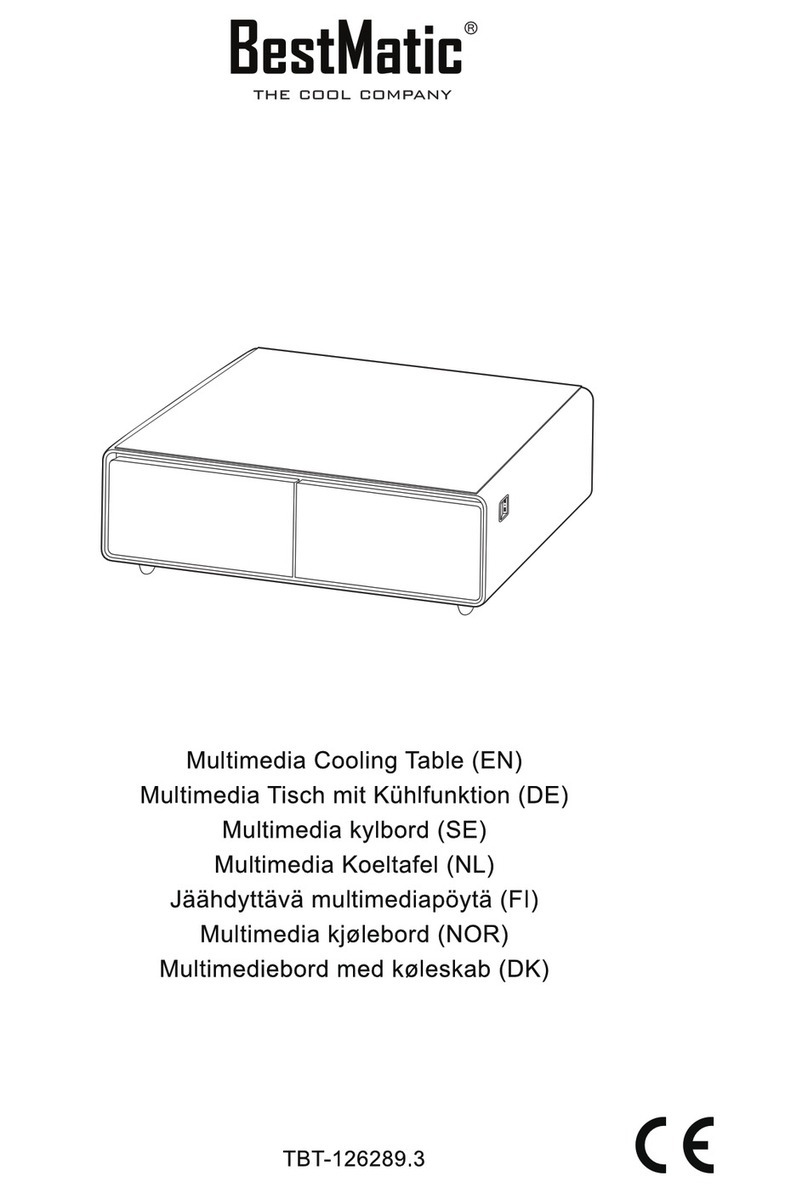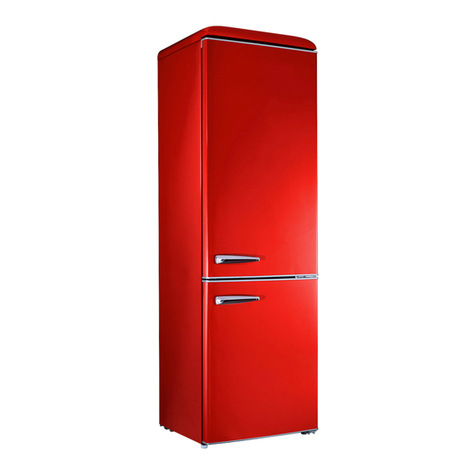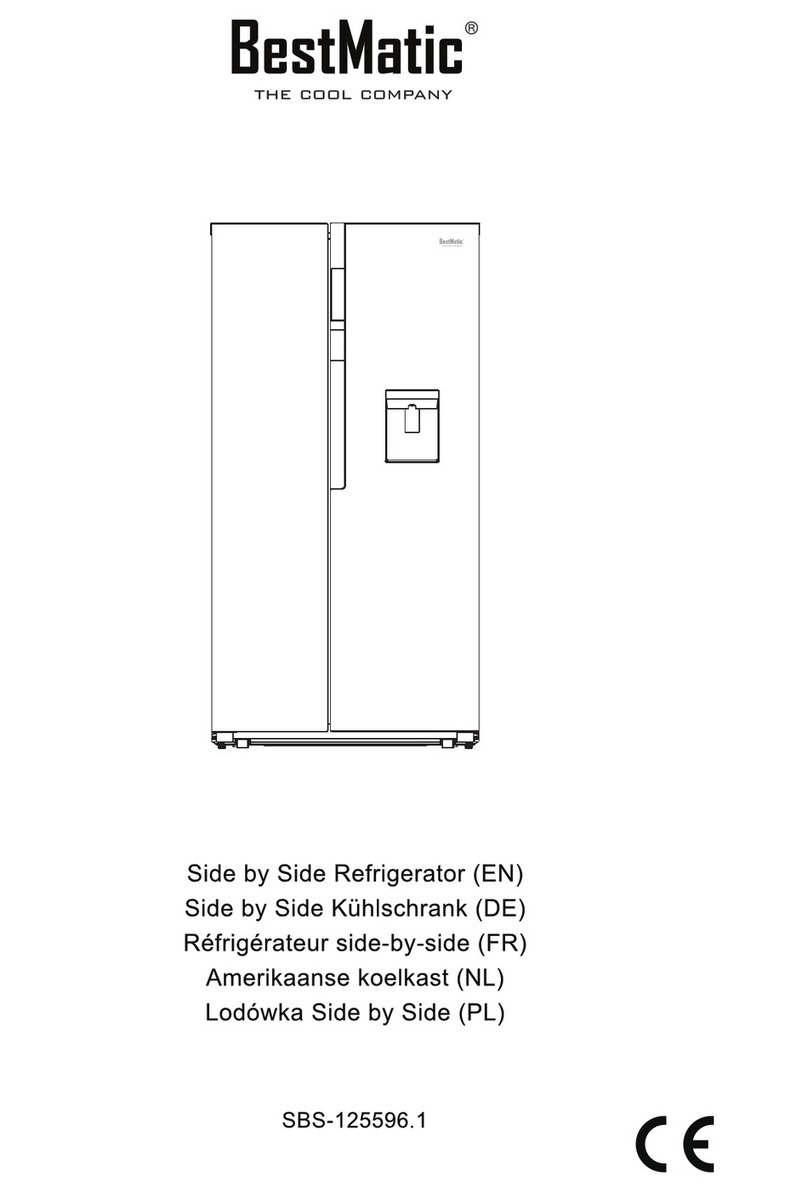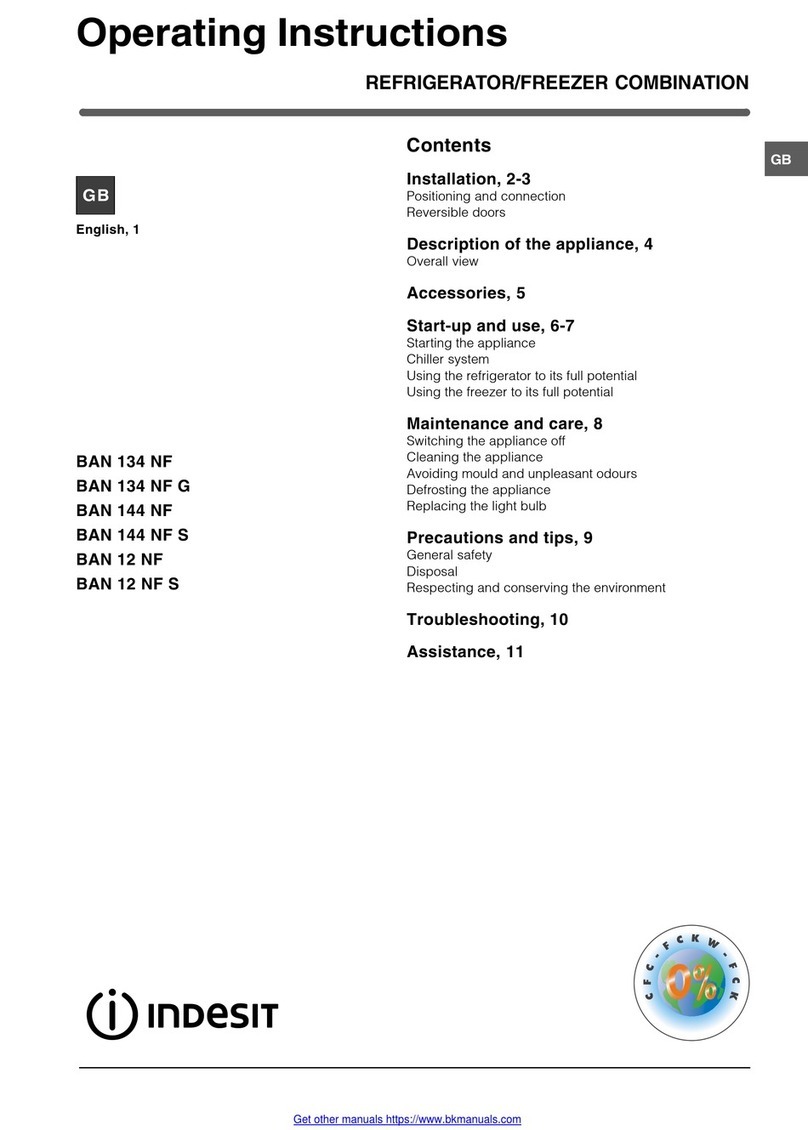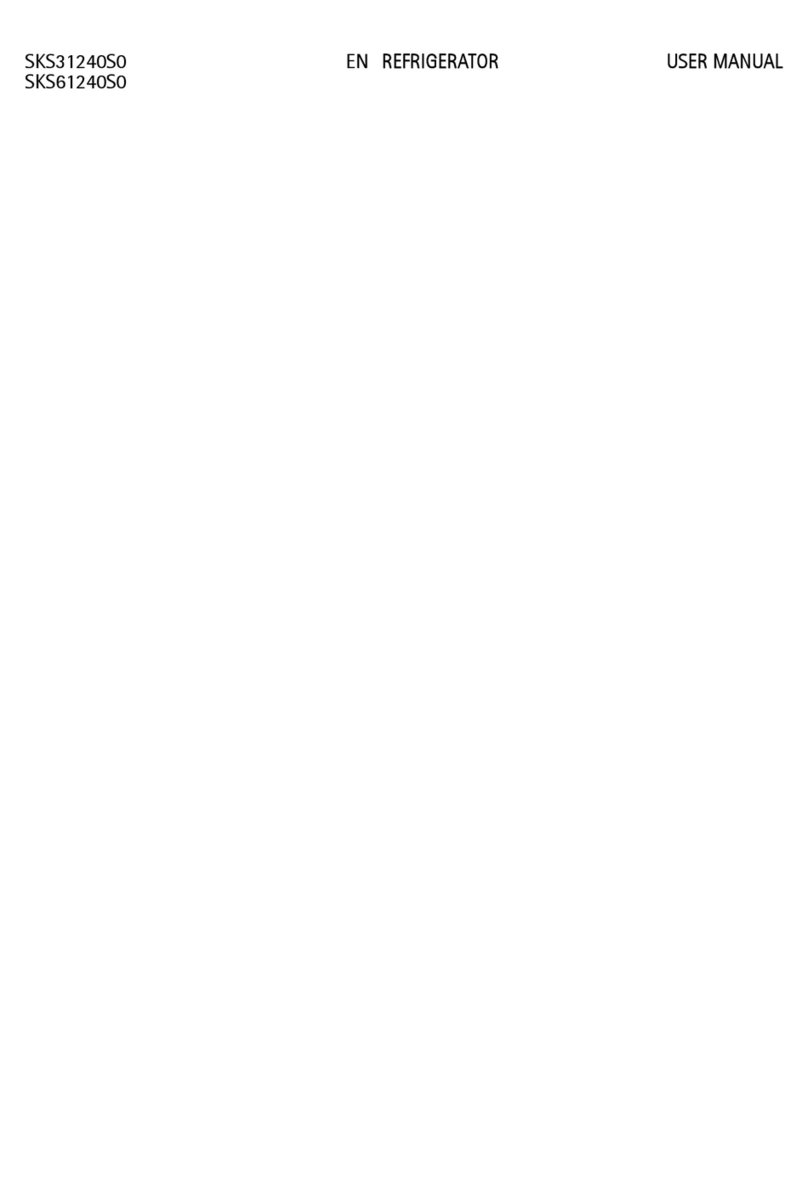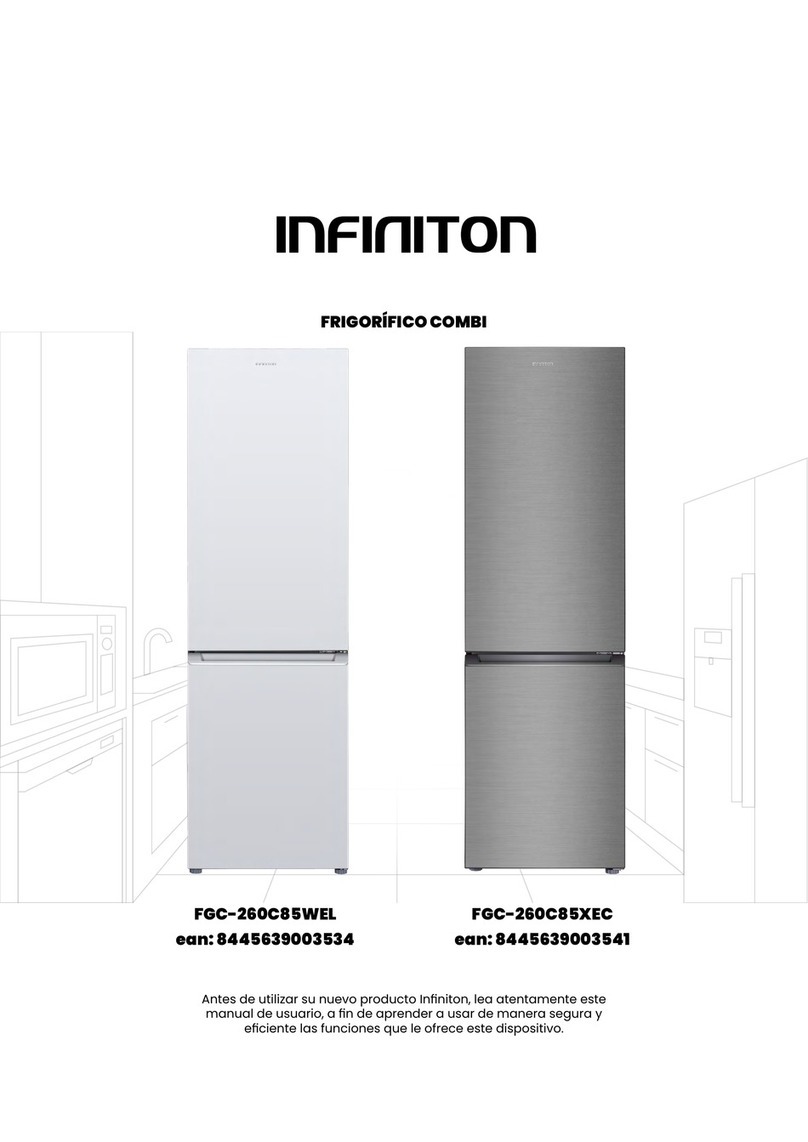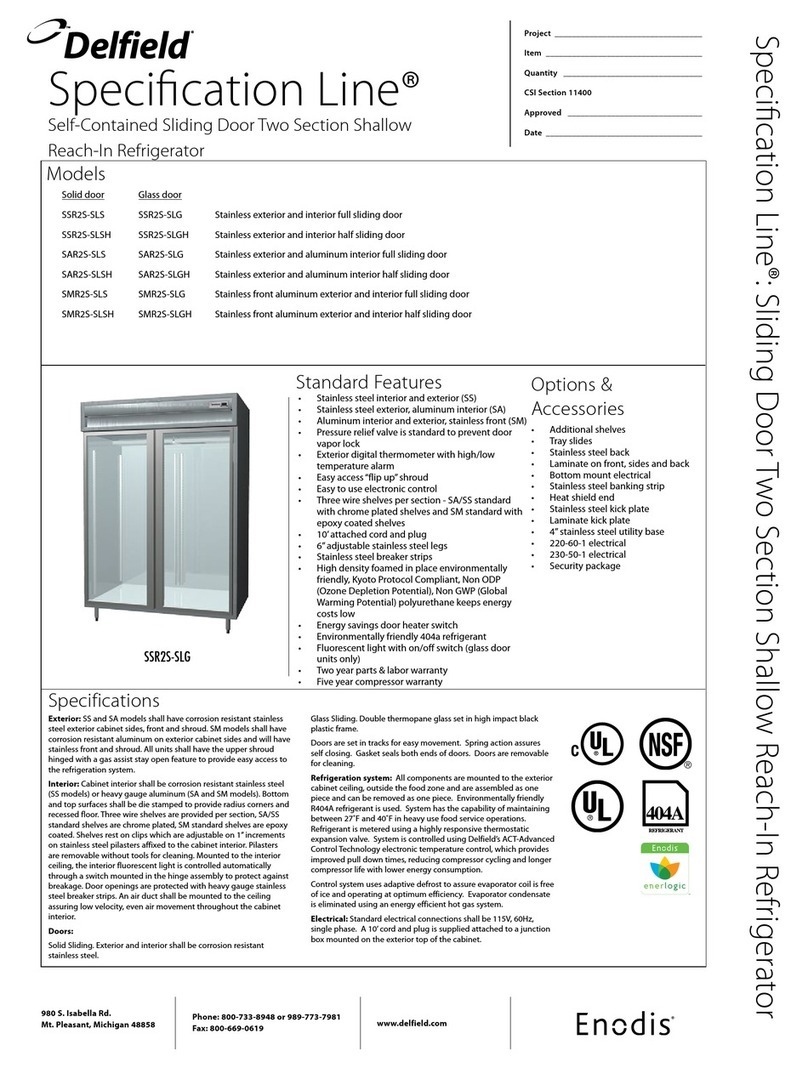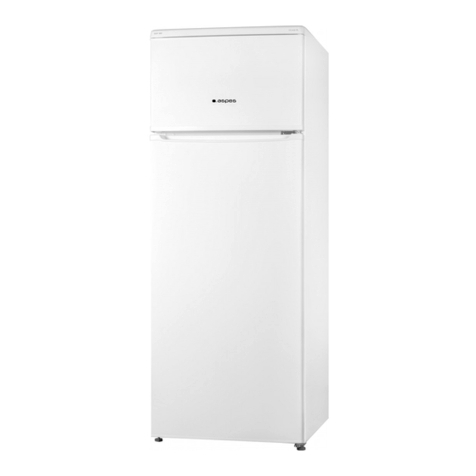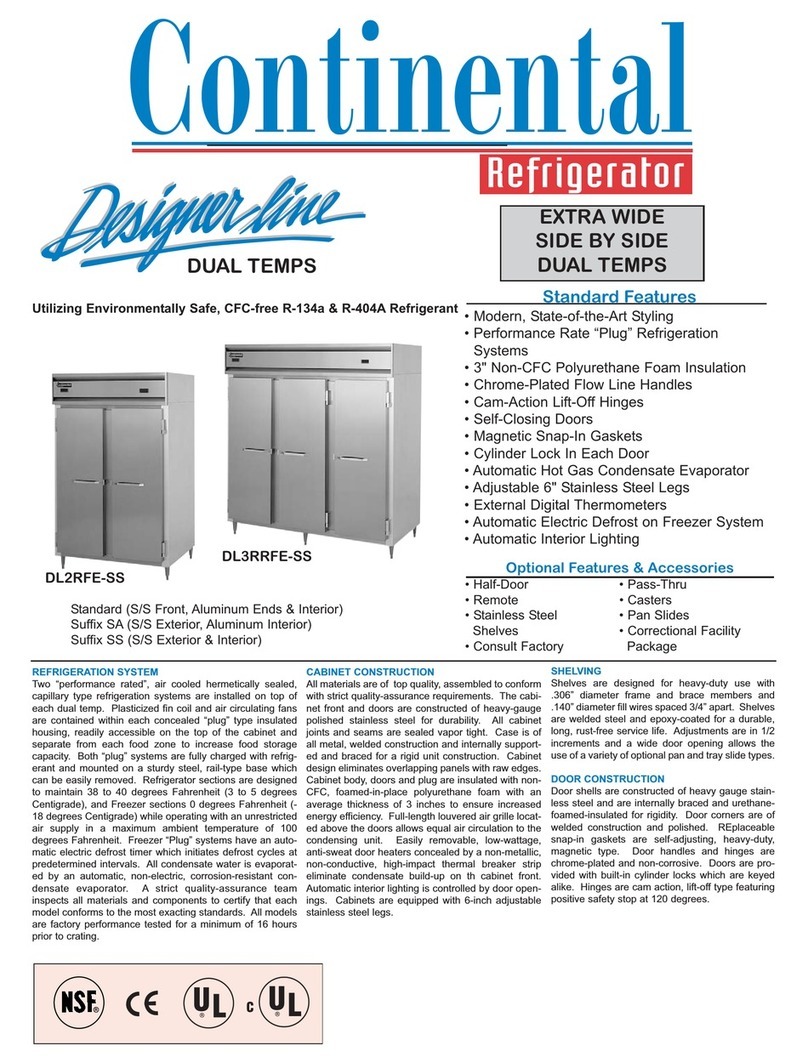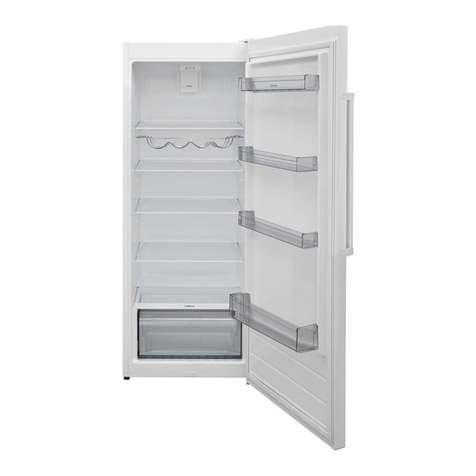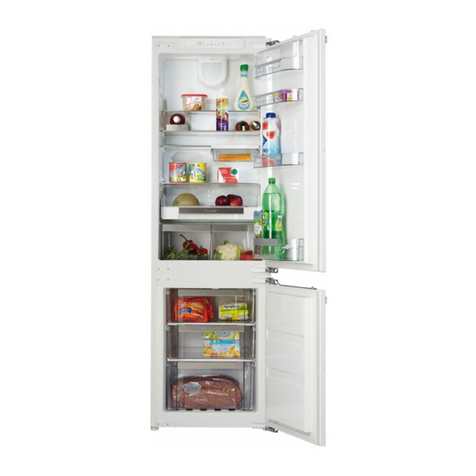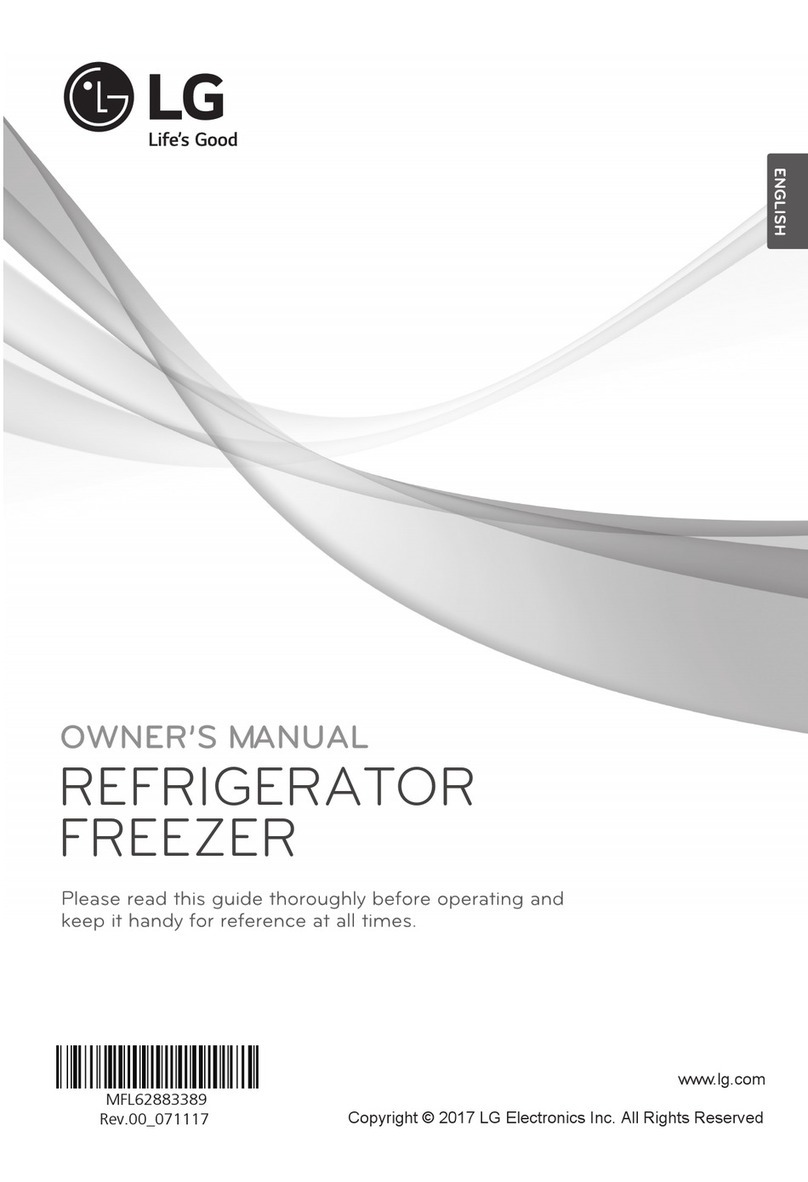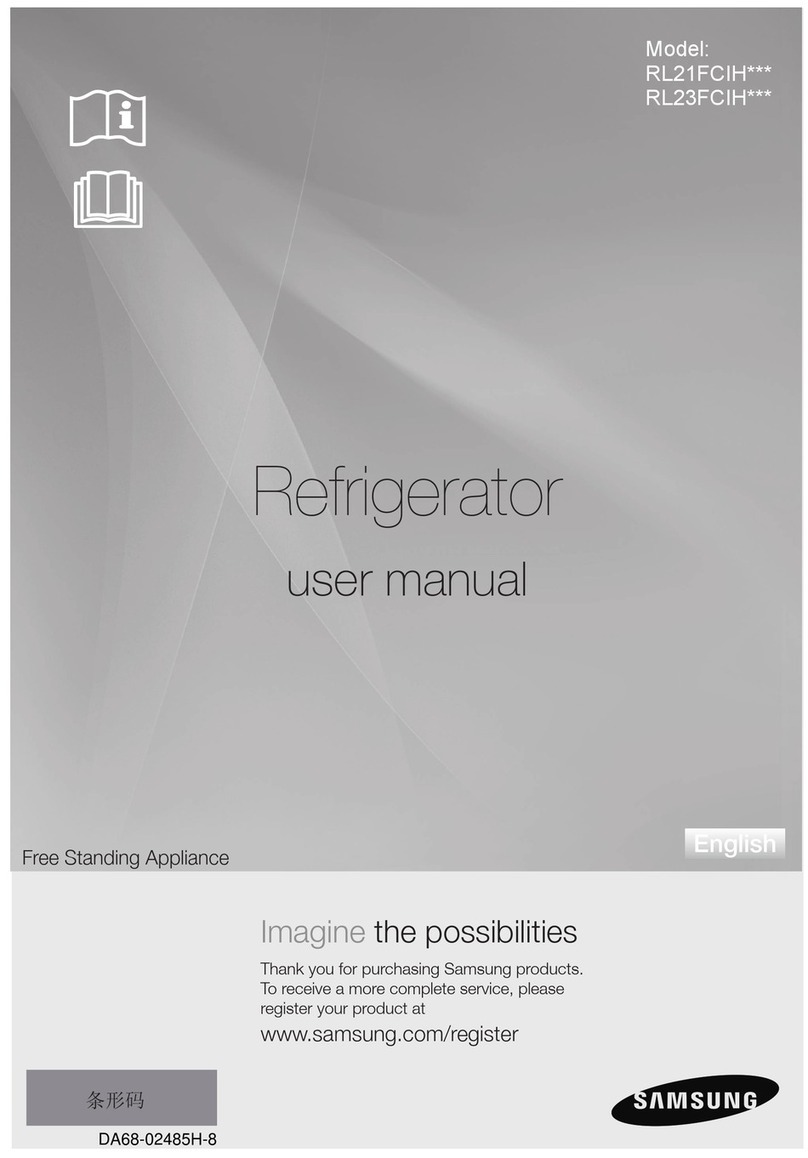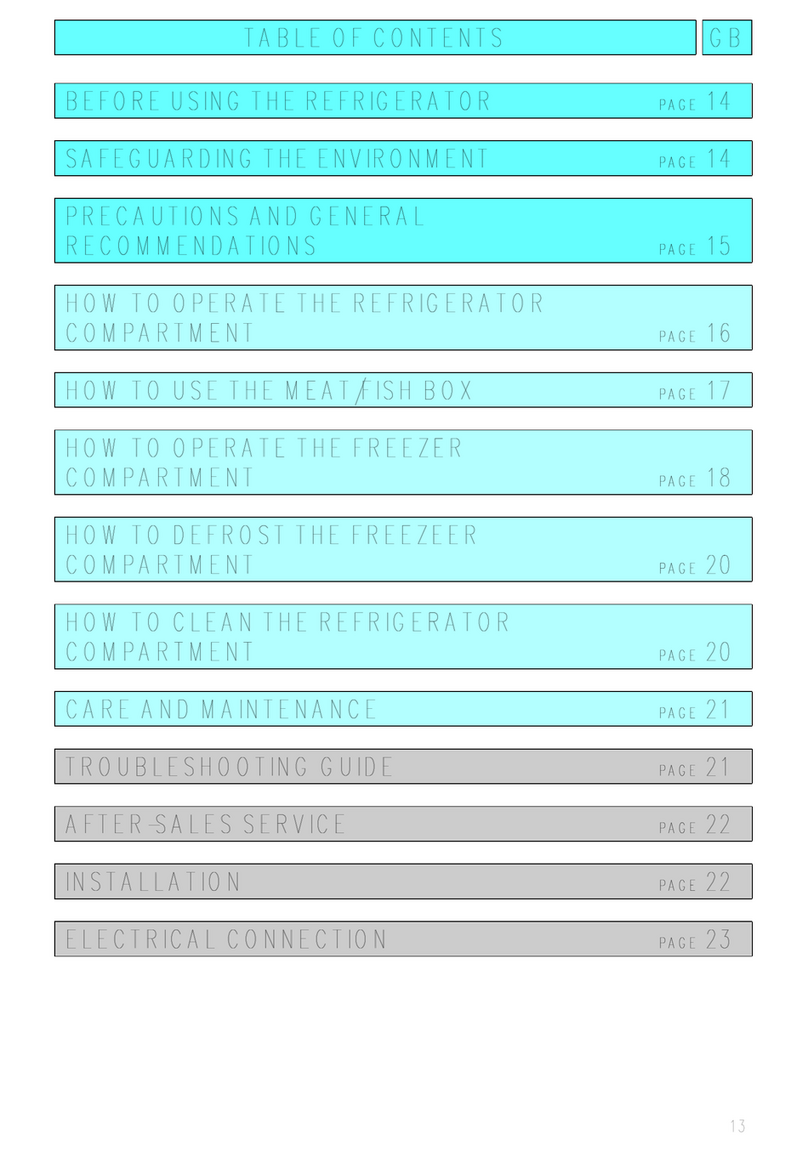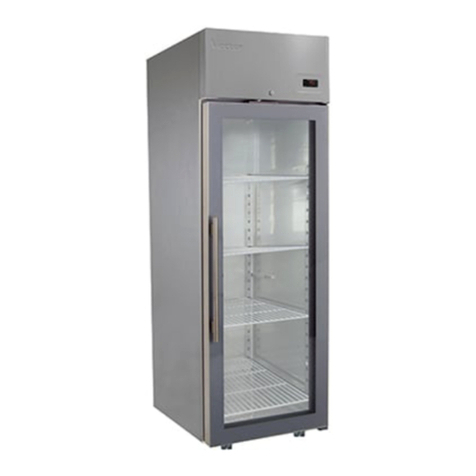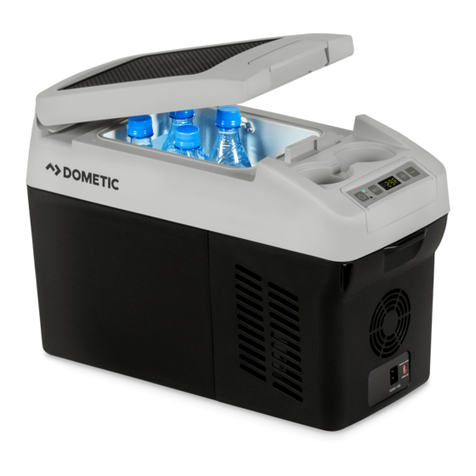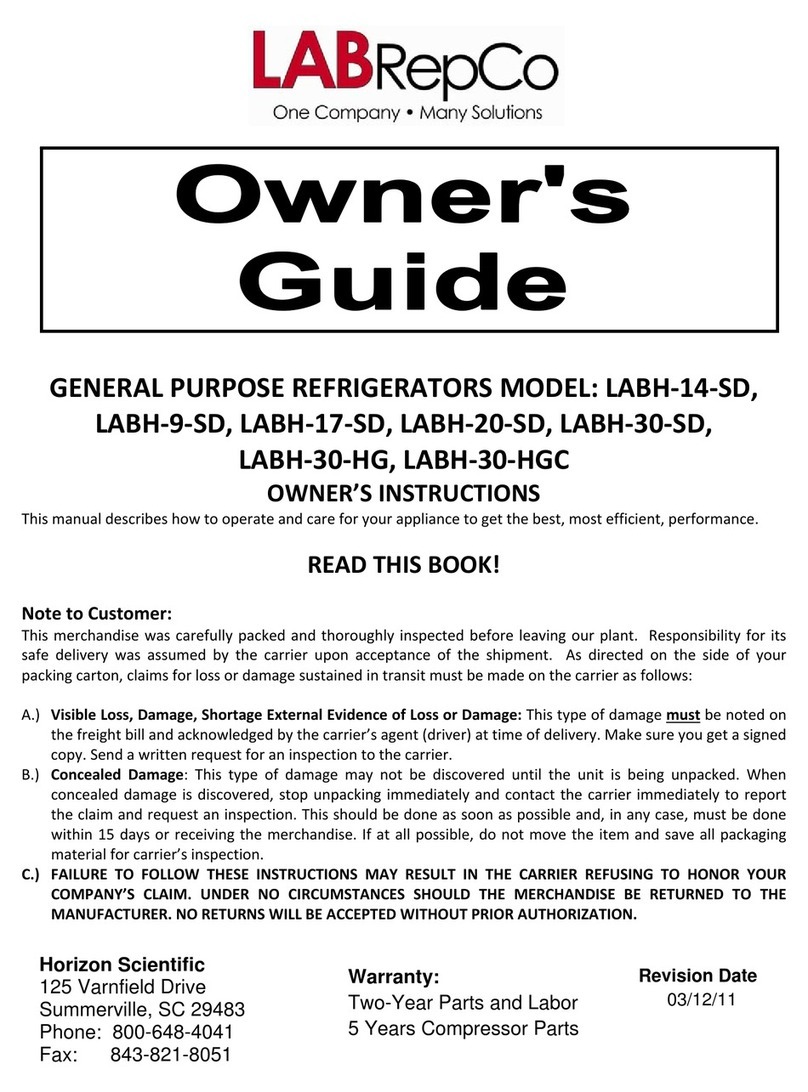BestMatic COM-125597.1 User manual


- 1 -
Content –Inhalt –Teneur –Inhoud –Treść
Instruction manual –English......................................................................................- 2 -
Bedienungsanleitung –German...............................................................................- 17 -
Mode d‘emploi – French..........................................................................................- 33 -
Gebruiksaanwijzing –Dutch.....................................................................................- 49 -
Instrukcja obsługi – Polish........................................................................................- 65 -

- 2 -
Instruction manual –English
SAFETY INSTRUCTIONS
Before use make sure to read all of the below instructions in
order to avoid injury or damage, and to get the best results
from the appliance. Make sure to keep this manual in a safe
place. If you give or transfer this appliance to someone else
make sure to also include this manual.
In case of damage caused by user failing to follow the
instructions in this manual the warranty will be void. The
manufacturer/importer accepts no liability for damages
caused by failure to follow the manual, a negligent use or use
not in accordance with the requirements of this manual.
1. Read and save these instructions. Attention: pictures in the
IM are for reference only.
2. This appliance can be used by children aged from 8 years
and above and persons with reduced physical, sensory or
mental capabilities or lack of experience and knowledge if
they have been given supervision or instruction
concerning use of the appliance in a safe way and
understand the hazards involved. Children shall not play
with the appliance. Cleaning and user maintenance shall
not be made by children without supervision.
3. Children aged from 3 to 8 years are allowed to load and
unload refrigerating appliances.
4. If the supply cord is damaged, it must be replaced by the
manufacturer, its service agent or similarly qualified
persons in order to avoid a hazard.
5. WARNING: Keep ventilation openings, in the appliance
enclosure or in the built-in structure, clear of obstruction.
6. WARNING: Do not use mechanical devices or other means
to accelerate the defrosting process, other than those
recommended by the manufacturer.
7. WARNING: Do not damage the refrigerant circuit.
8. WARNING: Do not use electrical appliances inside the food
storage compartments of the appliance, unless they are of
the type recommended by the manufacturer.

- 3 -
9. Do not store explosive substances such as aerosol cans
with a flammable propellant in this appliance.
10. This appliance is intended to be used in household and
similar applications such as
-staff kitchen areas in shops, offices and other working
environments;
-farm houses and by clients in hotels, motels and other
residential type environments;
-bed and breakfast type environments;
-catering and similar non-retail applications.
11. Place the appliance against a wall with a free distance not
exceeding 75mm and more than 50mm.
12. WARNING: When positioning the appliance, ensure the
supply cord is not trapped or damaged.
13. WARNING: Do not locate multiple portable socket-outlets
or portable power supplies at the rear of the appliance.
14. To avoid contamination of food, please respect the
following instructions:
-Opening the door for long periods can cause a significant
increase of the temperature in the compartments
of the appliance.
-Clean regularly surfaces that can come in contact with
food and accessible drainage systems.
-Clean water tanks if they have not been used for 48h;
flush the water system connected to a water supply if
water has not been drawn for 5 days. (Only applicable to
water dispenser and water inlet system)
-Store raw meat and fish in suitable containers in the
refrigerator, so that it is not in contact with or drip onto
other food.
-Two-star frozen-food compartments are suitable for
storing pre-frozen food, storing or making ice cream and
making ice cubes.
-One-, two- and three-star compartments are not
suitable for the freezing of fresh food.
-If the refrigerating appliance is left empty for long
periods, switch off, defrost, clean, dry, and leave the
door open to prevent mould developing within the
appliance.

- 4 -
15. This refrigerating appliance is not intended to be used as a
built-in appliance.
16. Climate class:
-Extended temperate (SN): 'this refrigerating appliance is
intended to be used at ambient temperatures ranging
from 10°C to 32 °C';
-Temperate(N): 'this refrigerating appliance is intended to
be used at ambient temperatures ranging from 16 °C to
32 °C';
-Subtropical (ST): 'this refrigerating appliance is intended
to be used at ambient temperatures ranging from 16 °C
to 38 °C';
-Tropical(T): 'this refrigerating appliance is intended to be
used at ambient temperatures ranging from 16 °C to
43 °C'.
17. Unplug the appliance from outlet when not in use, before
putting on or taking off parts, before cleaning.
18. Make sure to place the plug all the way into socket when
connecting your appliance.
19. Insert the plug into a single grounded socket.
20. Never use the appliance in place where combustible and
inflammable materials are kept.
21. For safety reason, be sure to repair or replace parts at an
authorized service dealer.
22. The motor is permanently lubricated and will require no oil.
23. The appliance must be positioned so that the plug is
accessible.
24. Please follow the local regulations regarding disposal of the
appliance for its flammable blowing gas. Before you scrap
the appliance, please take off the doors to prevent children
trapped.
25. Ensure the refrigerator is unplugged before cleaning or if
the product is not in use.
26. To clean the appliance, use only mild detergents or glass
cleaning products. Never use harsh detergents or solvents.

- 5 -
27. It is not recommended to use this refrigerator with an
extension cord or power board. Please ensure that the
appliance is plugged directly into the electrical outlet.
28. Do not place hot food or drink into the refrigerator before
it cools down to room temperature.
29. Close the door immediately after putting in any items so
the inside temperature will not rise dramatically.
30. Keep appliance away from any heat source or direct
sunlight.
31. To fix stably, the appliance must be placed on a flat and
solid surface. It should not be laid on any soft material.
32. Do not place any other appliance on top of the refrigerator,
and do not wet it.
33. To avoid injury from electrical shock do not operate the
appliance with wet hands, while standing on a wet surface
or while standing in water.
34. Do not use outdoors or in wet conditions.
35. Never pull the cord to disconnect it from the outlet. Grasp
the plug and pull it from the outlet.
36. Keep the cord away from heated surfaces.
37. Check that the voltage of the power supply in your home is
the same as the voltage shown on the rating label of this
product.
38. When frost in the freezer is removed, or when there is no
electricity or when refrigerator ceases to be used, it should
be cleaned in order to prevent it from smelling.
39. Defrost the freezer at least once a month because too
much frost may affect refrigeration.
40. Turn on electricity only 5 minutes later after electricity goes
off. Otherwise, the compressor may be damaged.
41. Children should be supervised to ensure that they do not
play with the appliance.
42. The appliance is not intended to be operated by means of
an external timer or a separate remote-control system.
43. This appliance has been incorporated with a grounded plug.
Please ensure the wall outlet in your house is well earthed.

- 6 -
44. It is recommended to check regularly the supply cord for
any sign of possible deterioration, and the appliance
should not be used if the cable is damaged.
45. Regarding the information for replacing of the lamps of the
appliance, thanks to refer to the paragraph “CLEANING
AND CARE” of the manual.
46. Regarding the information pertaining to the installation,
handing, maintenance, servicing and disposal of the
appliance, thanks to refer to the paragraph “TRANSPORT
AND HANDING”, “INSTALLATION”, “CLEANING AND CARE”
and “TROUBLESHOOTING” of the manual.
47. Disposal of the appliance: To prevent possible harm to the
environment or human health from uncontrolled waste
disposal, recycle it responsibly to promote the sustainable
reuse of material resources. And the disposal should only
be done through public collection points. Old refrigerators
can contain CFC that destroy the ozone; contact the waste
treatment center nearest your home for more details on
the correct procedures for disposal.
48. WARNING! Risk of fire / flammable
materials
Please keep the product far away fire source during using,
service and disposal. There are flammable materials at the
back of the appliance.

- 7 -
COM-125597.1 / COM-125597.2 / COM-125597.3 / COM-125597.4 EN
STRUCTURE ILLUSTRATION
1. Thermostat device
2. Refrigerator shelf
3. Salad crisper cover
4. Salad crisper
5. Upper drawer
6. Middle drawer
7. Lower drawer
8. Adjustable foot
9. Pocket racks
10. Bottle rack
Note: The glass shelves and the crisper can be removed and inserted for cleaning and storing of food according
to the appliance.
TRANSPORT AND HANDING
When transportation, hold the base and lift the refrigerator carefully with an angle inferior at 45 degree.
Never hold the door handle as support. Never place it upside down nor horizontally. Push refrigerator on its
basis and place it thanks to its roller feet.

- 8 -
INSTALLATION
This refrigerating appliance is not intended to be used as a built-in appliance.
To fix stably, the appliance must be placed on a flat and solid surface. It should not be laid on any soft material.
Choose a location where there is no heat source. Keep the refrigerator away from direct sunlight or other
appliance producing heat.
Choose a dry and well-ventilated place where there is no corrosive air.
In order to improve efficiency of the cooling system and save energy, it is necessary to maintain good ventilation
around the appliance for the dissipation of heat. For this reason, sufficient clear space should be available around
the refrigerator.
Place the appliance against a wall with a free distance that not exceeding 75mm but more than 50mm.
FIRST USE
Before the use of the refrigerator, remove all the packages, including bottom cushion and foam pads and rubber
belts in the refrigerator.
Adjust the feet and clear the outside and inside of the refrigerator with warm cloth.
Do not start the refrigerator immediately after vertical placement. Only start it after 2-6 hours standing to ensure
its proper operation.
To prevent damage to the power cord and any consequence incidents, the power cord should not be covered
by the refrigerator or other objects. Before switching on the refrigerator, please check the voltage range of the
refrigerator carefully if the same as that of the power supply.
When the refrigerator is first installed, allow it to stabilize at normal operating temperatures for 2-3 hours prior
to filling it with fresh or frozen foods.
If operation is interrupted, wait for 5 minutes before restarting.
TEST
Clean the parts of the refrigerator with lukewarm water on a soft cloth or with a neutral detergent and with
clear water, then wipe them dry.
Notes: Electric parts of the refrigerator can only be wiped by dry cloth.
Turn the thermostat knob on the “3” position and turn on electricity. The compressor and the light inside the
refrigerator begin to work.
Close the door and wait 30 minutes. If the temperature in the freezer compartment decreased obviously, it
shows that the refrigerator system works well. When the refrigerator operates for a period of time, the
temperature controller will automatically set the temperature on conditions that the door is not opened too
often.
If the above steps are successful, the trial operations are finished. The refrigerator works normally.
TEMPERATURE CONTROL
The temperature in the refrigerator compartment and in the freezer compartment is controlled by the
temperature controller installed on the right side of the refrigerator compartment.
Turn the thermostat knob to regulate the temperature inside the refrigerator.
The marks on the knob are not the exact number of the degrees of temperature but the temperature grades to
“0” from “7”. The first grade corresponds to a forced STOP of the refrigeration and the 7th grade corresponds
to the lowest temperature the refrigerator can produce. Turn the knob from "1" position to "7" position, the
temperature decreases continuously.
Set the thermostat knob to "3-4" position for a normal use.
Appliance thermostat has 7 settings. The appliance assures that temperature is maintained as long as it is in
operation and that it is used in normal conditions of use. The temperature inside the appliance can be
influenced by many factors: ambient temperature, sun exposure, number of doors opening and amount
of food
stored… The slight changes in temperature are perfectly normal.
•
Setting 1: Refrigerator compartment average temperature 10 to 14 °C / Freezer compartment average
temperature below -6 to -10°C
•
Setting 4: Refrigerator compartment average temperature 4 to 8 °C / Freezer compartment average
temperature -13 to -17°C
•
Setting 7: Refrigerator compartment average temperature -2 to 2 °C / Freezer compartment average
temperature -20 to -24°C

- 9 -
Note: the temperature will impact the storage time of food. Set the temperature as necessary. Warmer
will accelerate food spoilage and colder will freeze food bad. Thus, food to be wasted.
STORAGE OF FOOD
Your appliance has the accessories as the “Structure illustration” showed in general, with this part instruction
you can have the right way to storage your food. The glass shelves and crisper can be removed to store food if
needed.
Note: Food is not allowed to touch directly all surfaces inside the appliance. It has to be wrapped separately in
aluminum sheet or in cellophane sheet or in airtight plastic boxes.
Storing food in the refrigerator compartment
The fridge compartment helps to extend the storage times of fresh perishable foods.
Fresh food care for best results:
•Store foods that are very fresh and of good quality.
•Ensure that food is well wrapped or covered before it is stored. This will prevent food from dehydrating,
deteriorating in color or losing taste and will help maintain freshness. It will also prevent odor transfer.
Vegetables and fruit don’t need to be wrapped if they are stored in the vegetable container of the fridge
compartment.
•Make sure that strong smelling foods are wrapped or covered and stored away from foods such as butter,
milk and cream which can be tainted by strong odors.
•Cool hot foods down before placing them in the fridge compartment.
Dairy foods and eggs
•Most pre-packed dairy foods have a recommended ‘use by /best before/best by/’date stamped on them.
Store them in the fridge compartment and use within the recommended time.
•Butter can become tainted by strong smelling foods so it is best stored in a sealed container.
•Eggs should be stored in the fridge compartment.
Red meat
•Place fresh red meat on a plate and loosely cover with waxed paper, plastic wrap or foil.
•Store cooked and raw meat on separate plates. This will prevent any juice lost from the raw meat from
contaminating the cooked product.
Poultry
•Fresh whole birds should be rinsed inside and out with cold running water, dried and placed on a plate.
Cover loosely with plastic wrap or foil.
•Poultry pieces should also be stored this way. Whole poultry should never be stuffed until just before
cooking, otherwise food poisoning may result.
Fish and seafood
•Whole fish and fillets should be used on the day of purchase. Until required, refrigerate on a plate loosely
covered with plastic wrap, waxed paper or foil.
•If storing overnight or longer, take particular care to select very fresh fish. Whole fish should be rinsed in
cold water to remove loose scales and dirt and then patted dry with paper towels. Place whole fish or fillets
in a sealed plastic bag.
•Keep shellfish chilled at all times. Use within 1-2 days.
Precooked foods and leftovers
•These should be stored in suitable covered containers so that the food will not dry out.
•Keep for only 1-2 days.
•Reheat leftovers only once and until steaming hot.
Vegetable container
•The vegetable container is the optimum storage location for fresh fruit and vegetables.
•Take care not to store the following at temperatures of less than 7°C for long periods: Citrus fruit, melons,
pineapple, papaya, passion fruit, cucumber, peppers, tomatoes.

- 10 -
•Undesirable changes will occur at low temperatures such as softening of the flesh, browning and/or
accelerated decaying.
•Do not refrigerate avocados (until they are ripe), bananas and mangoes.
Food
Location
Butter, cheese
Upper door rack
Eggs
Door rack
Fruit, vegetables, salad
Crisper
Meat, sausage, cheese, milk
Lower area (lowest shelf / crisper cover)
/ crisper cover)
Dairy products, canned food, cans
Upper area or door rack
Drinks, bottles, tubes
Door rack
Freezing and storing food in the freezer compartment
•To store deep-frozen food.
•To make ice cubes.
•To freeze food.
Note: Ensure that the freezer compartment door has been closed properly.
Purchasing frozen food
•Packaging must not be damaged.
•Use by the 'use by /best before/best by/' date.
•If possible, transport deep-frozen food in an insulated bag and place quickly in the freezer compartment.
Storing frozen food
Store at -18°C or colder. Avoid opening the freezer compartment door unnecessarily.
Freezing fresh food
Freeze fresh and undamaged food only.
To retain the best possible nutritional value, flavor and color, vegetables should be blanched before freezing.
Aubergines, peppers, zucchini and asparagus do not require blanching.
Note: Keep food to be frozen away from food which is already frozen.
•The following foods are suitable for freezing:
Cakes and pastries, fish and seafood, meat, game, poultry, vegetables, fruit, herbs, eggs without shells, dairy
products such as cheese and butter, ready meals and leftovers such as soups, stews, cooked meat and fish,
potato dishes, soufflés and desserts.
•The following foods are not suitable for freezing:
Types of vegetables, which are usually consumed raw, such as lettuce or radishes, eggs in shells, grapes, whole
apples, pears and peaches, hard-boiled eggs, yoghurt, soured milk, sour cream, and mayonnaise.
Packing frozen food
To prevent food from losing its flavor or drying out, place food in airtight packaging.
1. Place food in packaging.
2. Remove air.
3. Seal the wrapping.
4. Label packaging with contents and dates of freezing.
Suitable packaging:
Plastic film, tubular film made of polyethylene, aluminum foil. These products are available from specialist
outlets.
Recommended storage times of frozen food in the freezer compartment
These times vary depending on the type of food. The food that you freeze can be preserved from 1 to 12 months
(minimum at -18°C).

- 11 -
Food
Storage time
Bacon, casseroles, milk
1 month
Bread, ice cream, sausages, pies, prepared shellfish, oily fish
2 months
Non-oily fish, shellfish, pizza, scones and muffins
3 months
Ham, cakes, biscuits, beef and lamb chops, poultry pieces
4 months
Butter, vegetables (blanched), eggs whole and yolks, cooked crayfish, minced meat (raw),
pork (raw)
6 months
Fruit (dry or in syrup), egg whites, beef (raw), whole chicken, lamb (raw), fruit cakes
12 months
Never forget:
•When you freeze fresh foods with a 'use by /best before/best by/' date, you must freeze them
before this date expires.
•Check that the food was not already frozen. Indeed, frozen food that has thawed completely must not be
re-frozen.
•Once defrosted, food should be consumed quickly.
DEFROSTING
Refrigerator compartment defrosts fully automatically
While the refrigerating unit is running, beads of condensation or hoarfrost from at the back of the refrigerator
compartment. This is normal. It is not necessary to wipe off the condensation or frost. The rear panel defrosts
automatically. The condensation runs into the condensation channel and is conveyed to the refrigerating unit
where it evaporates.
Note: Keep the condensation channel and drainage hole clean, so that the condensation can run out.
Defrosting the freezer compartment
The freezer compartment does not defrost automatically, otherwise the frozen food would start thawing.
A layer of frost in the freezer compartment impairs refrigeration of the frozen food and increases power
consumption. Remove the layer of hoarfrost regularly.
WARNING: Do not scrape off hoarfrost or ice with a knife or pointed object. Doing this may damage the
refrigerant tubes.
1. Remove the frozen food and place temporarily in a cool location.
2. Set the temperature control knob to the 0 position and disconnect the mains plug from the mains socket.
3. To accelerate the defrosting process, place a pan of hot water on a stand in the freezer compartment.
4. Wipe up condensation with a cloth or sponge.
5. Wipe dry the freezer compartment.
6. Plug in the appliance and adjust the temperature control knob as desired.
7. Let the appliance work for 2-3 hours to stabilize at the normal operating temperature.
8. Put the frozen food back in the freezer compartment.
HELPFUL HINTS AND TIPS
We recommend that you follow the tips below to save energy.
•Try to avoid keeping the door open for long periods in order to conserve energy.
•Ensure the appliance is away from any sources of heat (Direct sunlight, electric oven or cooker etc.)
•Don't set the temperature colder than necessary.
•Don't store warm food or evaporating liquid in the appliance.
•Place the appliance in a well ventilated, humidity free room.
•Please refer to Installing your new appliance chapter.
•The “STRUCTURE ILLUSTRATION” shows the correct combination for the drawers, crisper and shelves, do
not adjust the combination as this is designed to be the most energy efficient configuration.
Hints for fresh food refrigeration
•Do not place hot food directly into the refrigerator or freezer, the internal temperature will increase
resulting in the compressor having to work harder and will consume more energy.
•Do cover or wrap the food, particularly if it has a strong flavor.
•Place food properly so that air can circulate freely around it.

- 12 -
Hints for refrigerator
•Meat (All Types) Wrap in polythene food: wrap and place on the glass shelf above the vegetable drawer.
Always follow food storage times and use by dates suggested by manufacturers.
•Cooked food, cold dishes, etc.: They should be covered and may be placed on any shelf.
•Fruit and vegetables: They should be stored in the special drawer provided.
•Butter and cheese: Should be wrapped in airtight foil or plastic film wrap.
•Milk bottles: Should have a lid and be stored in the door racks.
Hints for freezing
•When first starting-up or after a period out of use, let the appliance run at least 2 hours on the higher settings
before putting food in the compartment.
•Prepare food in small portions to enable it to be rapidly and completely frozen and to make it possible to
subsequently thaw only the quantity required.
•Wrap up the food in aluminum foil or polyethylene food wraps which are airtight.
•Do not allow fresh, unfrozen food to touch the food which is already frozen to avoid temperature rise of the
latter.
•Iced products, if consumed immediately after removal from the freezer compartment, will probably cause
frost burns to the skin.
•It is recommended to label and date each frozen package in order to keep track of the storage time.
Hints for the storage of frozen food
•Ensure that frozen food has been stored correctly by the food retailer.
•Once defrosted, food will deteriorate rapidly and should not be re-frozen. Do not exceed the storage period
indicated by the food manufacturer.
Switching off your appliance
If the appliance needs to be switched off for an extended period, the following steps should be taken to prevent
mould on the appliance.
1. Remove all food;
2. Remove the power plug from the mains socket;
3. Clean and dry the interior thoroughly;
4. Ensure that all the doors are wedged open slightly to allow air to circulate.
CLEANING AND CARE
For hygienic reasons the appliance (including exterior and interior accessories) should be cleaned regularly at
least every two months.
WARNING: The appliance must not be connected to the mains during cleaning. Danger of electrical shock!
Before cleaning, switch the appliance off and remove the plug from the mains socket.
Exterior cleaning
•To maintain good appearance of your appliance, you should clean it regularly.
•Spray water onto the cleaning cloth instead of spraying directly on the surface of the appliance. This helps
ensure an even distribution of moisture to the surface.
•Clean the doors, handles and cabinet surfaces with a mild detergent and then wiped dry with a soft cloth.
Caution!
Don't use sharp objects as they are likely to scratch the surface. Don’t use Thinner, Car detergent, Clorox,
ethereal oil, abrasive cleansers or organic solvent such as Benzene for cleaning. They may damage the surface
of the appliance and may cause fire.
Interior cleaning
You should clean the appliance interior regularly. It will be easier to clean when food stocks are low. Wipe the
inside of the fridge freezer with a weak solution of bicarbonate of soda, and then rinse with warm water using
a wrung-out sponge or cloth. Wipe completely dry before replacing the shelves and baskets. Thoroughly dry all
surfaces and removable parts.

- 13 -
Caution!
Don't use sharp objects to remove frost from the freezer. Only after the interior completely dry should the
appliance be switched back on and plugged back into the mains socket.
Door seals cleaning
Take care to keep door seals clean. Sticky food and drinks can cause seals to stick to the cabinet and tear when
you open the door. Wash seal with a mild detergent and warm water. Rinse and dry it thoroughly after cleaning.
Caution! Only after the door seals are completely dry should the appliance be powered on.
Replacing the light bulb
If the internal light does not work anymore, disconnect then reconnect at once the device.
If the light does not still work, verify if the light bulb is correctly screwed. If in spite of these tests, there is no
light, it is necessary to change the light bulb. Use a 220-240V~, MAX 10W light bulb.
1. Disconnect the appliance;
2. Open the light cover;
3. Undo the defective light bulb anticlockwise.
4. Screw the new light bulb clockwise.
DOOR REVERSE
Users can change the direction of opening according to one's own needs. The concrete operating sequence is as
follows: (The pictures below are for the guideline to reverse the door. The appearance of the appliance may be
different from the product you purchased.)
1
Remove the top hinge cover.
2
Lift the door upwards to disengage it from the
middle hinge, put the door to one side and lay it
down gently on a padded surface.
Replaceable (LED only) light source by a
professional
This product contains a light source of
energy efficiency class G.

- 14 -
3
Using a screwdriver, dismantle from the
middle hinge, lift the door upwards to
disengage it from the lower hinge. Put the
door to one side and lay it down gently on a
padded surface.
4
Take out the hinge pin out, rotate the hinge 180
degrees, reverse and reinstall it to the opposite
side. Swap over the position of the lower hinge
and the adjustable leg to the other side of the
cabinet.
5
Remove the hinge pin that is in the bottom of
the fridge and freezer door. At the other side of
fridge and freezer door, insert the replacement
hinge pin that is supplied with the appliance
inside the parts bag.
6
Place the freezer door on the lower hinge,
making sure that the hinge pin is inserted in the
hole at the bottom of the freezer door, put the
middle hinge back on the cabinet, making sure
that it is on the opposite side from its original
position.
7
Place the fridge door on the middle hinge,
making sure that the hinge pin is inserted in the
hole at the bottom of the fridge door. Place the
top hinge on the fridge door, fixing the screw
and cover.
8
Take out the top hinge from top refrigerator
door, rotate the top hinge 180 degrees, take out
the hinge pin out, reverse and reinstall it to the
opposite side.
9
Take the left top hinge cover parts from the bag
and install it to the left side, tighten all the
screws.

- 15 -
TECHNICAL SPECIFICATIONS
Rated voltage:
220-240V~
Rated current:
2.0A
Rated frequency:
50Hz
Lamp power:
MAX 10W
Climate class:
N/ST
Refrigerant:
R600a(82g)
Protection against electrical shock:
I
Insulation blowing gas:
CYCLOPENTANE
Climate class:
-Extended temperate (SN): 'this refrigerating appliance is intended to be used at ambient temperatures
ranging from 10°C to 32 °C';
-Temperate(N): 'this refrigerating appliance is intended to be used at ambient temperatures ranging from
16 °C to 32 °C';
-Subtropical (ST): 'this refrigerating appliance is intended to be used at ambient temperatures ranging from
16 °C to 38 °C';
-Tropical(T): 'this refrigerating appliance is intended to be used at ambient temperatures ranging from 16 °C
to 43 °C';
Note: More data information, please scan the QR code on the energy label.
TROUBLESHOOTING
Symptom
Cause
Solution
The appliance does not
work.
There is no power supply.
Verify that the appliance is connected to the
plug.
The fuse doesn’t work.
Replace the fuse.
The appliance makes a
lot of noise.
The appliance is too close to the wall,
or is not stable, or the accessories
inside the refrigerator are placed in
wrong position.
Stabilize the base of the refrigerator by
adjusting the position of feet, take away the
device off the wall, place correctly the
accessories inside the refrigerator.
The appliance doesn’t
cool enough.
The door is too often opened or was
left opened for a long time.
Close the door and do not open it too much
frequently.
The refrigerator is too close to the
wall.
Take away the device off the wall for the
ventilation.
The refrigeratoris too full.
Remove food of the device.
The temperature is badly adjusted.
Turn the knob of regulation of temperature
on “3” or more.
There are smells in the
appliance.
Food becomes obsolete inside the
refrigerator.
Throw away the obsolete food and wrap
the other.
The inside of the device needs to
be cleaned.
Clean the inside of the refrigerator.
The following symptoms are not breakdowns:
•The noise of the cooling liquid which circulates in pipes can be heard, it is normal.
•The humidity on the surface outside of the device during the wet seasons is not a problem of the device;
you just need to wipe it with a dry soft cloth.
•The compressor and the condenser can warm more during the periods of strong heat.
•The frame of the door is a bit hot; it means that the condenser works to evacuate the humidity of air.
GUARANTEE AND CUSTOMER SERVICE
Before delivery our devices are subjected to rigorous quality control. If, despite all care, damage has occurred
during production or transportation, please return the device to your dealer. In addition to statutory legal rights,
the purchaser has an option to claim under the terms of the following guarantee:

- 16 -
For the purchased device we provide 2 years guarantee, commencing from the day of sale. If you have a
defective product, you can directly go back to the point of purchase.
Defects which arise due to improper handling of the device and malfunctions due to interventions and repairs
by third parties or the fitting of non-original parts are not covered by this guarantee. Always keep your receipt,
without the receipt you can’t claim any form of warranty. Damage caused by not following the instruction
manual, will lead to a void of warranty, if this results in consequential damages then we will not be liable. Neither
can we hold responsible for material damage or personal injury caused by improper use or if the instruction
manual are not properly executed. Damage to accessories does not mean free replacement of the whole
appliance. In such case please contact our service department. Broken glass or breakage of plastic parts is always
subject to a charge. Defects to consumables or parts subjected to wearing, as well as cleaning, maintenance or
the replacement of said parts are not covered by the warranty and are to be paid.
The guarantee period of the spare parts is 2 years. If you need replacement, please contact our customer service.
ENVIRONMENT FRIENDLY DISPOSAL
Recycling –European Directive 2012/19/EU
This marking indicates that this product should not be disposed with other household wastes. To
prevent possible harm to the environment or human health from uncontrolled waste disposal,
recycle it responsibly to promote the sustainable reuse of material resources. To return your used
device, please use the return and collection systems or contact the retailer where the product was
purchased. They can take this product for environmental safe recycling.
For professional repair and ordering spare parts, please contact our customer service.
Manufactured by: Emerio Deutschland GmbH
Lerchenweg 3, 40789 Monheim am Rhein, Deutschland
Service Hot Line: +49 3222 1097 615

- 17 -
Bedienungsanleitung –German
SICHERHEITSINFORMATIONEN
Lesen Sie vor dem Gebrauch unbedingt die nachfolgenden
Anleitungen, um Verletzungen oder Beschädigungen zu
vermeiden und das beste Ergebnis mit dem Gerät zu erzielen.
Bewahren Sie diese Bedienungsanleitung an einem sicheren
Ort auf. Wenn Sie dieses Gerät an eine andere Person
weitergeben, stellen Sie sicher, dass Sie auch diese
Bedienungsanleitung aushändigen.
Im Falle von Beschädigungen, die durch die Missachtung der
Anleitungen in dieser Bedienungsanleitung verursacht
wurden, wird die Garantie ungültig. Der Hersteller/Importeur
haftet nicht für Schäden, die durch Missachtung der
Bedienungsanleitung, fahrlässigen Gebrauch oder Benutzung,
die nicht in Übereinstimmung mit den Anforderungen dieser
Bedienungsanleitung erfolgt, verursacht wurden.
1. Lesen und bewahren Sie diese Anleitungen auf. Achtung:
Die Bilder in der Bedienungsanleitung dienen nur zur
Veranschaulichung.
2. Dieses Gerät kann von Kindern ab 8 Jahren und von
Personen mit eingeschränkten physischen, sensorischen
oder geistigen Fähigkeiten oder ohne Erfahrung und/oder
Wissen benutzt werden, wenn diese durch eine für ihre
Sicherheit zuständige Person beaufsichtigt werden oder
von ihr Anweisungen erhielten, wie das Gerät sicher zu
benutzen ist und sie auf die Risiken aufmerksam gemacht
wurden. Kinder dürfen nicht mit dem Gerät spielen. Kinder
sollten dieses Gerät nicht unbeaufsichtigt reinigen oder
warten.
3. Kinder im Alter zwischen 3 und 8 Jahren dürfen Kühlgeräte
befüllen und leeren.
4. Wenn die Netzanschlussleitung dieses Gerätes beschädigt
wird, muss sie durch den Hersteller oder seinen
Kundendienst oder eine ähnlich qualifizierte Person ersetzt
werden, um Gefährdungen zu vermeiden.

- 18 -
5. WARNUNG: Halten Sie die Lüftungsöffnungen im Gehäuse
oder direkt im Gerät frei von Hindernissen.
7. WARNUNG: Beschädigen Sie den Kältemittelkreislauf nicht.
8. WARNUNG: Verwenden Sie keine elektrischen Geräte in
den Lebensmittelfächern des Geräts, es sei denn, sie
entsprechen dem Typ, der vom Hersteller empfohlen wird.
10. Dieses Gerät ist dazu bestimmt, im Haushalt und ähnlichen
Anwendungsbereichen benutzt zu werden, wie z.B.:
-in Personalküchen von Ladengeschäften, Büros und
anderen Arbeitsumgebungen,
-auf Bauernhöfen, von Gästen in Hotels, Motels und
anderen Wohnumgebungen,
-Pensionen und ähnlichen Unterkünften,
-im Catering und ähnlichen Nicht-Einzelhandelsbereichen.
11. Das Gerät muss an einer Wand nicht weiter als 75 mm und
mindestens 50 mm entfernt aufgestellt werden.
12. WARNUNG: Stellen Sie das Gerät so auf, dass das
Versorgungskabel nicht eingeklemmt oder beschädigt wird.
13. WARNUNG: Stellen Sie keine Mehrfachsteckdosen oder
tragbare Stromquellen an der Rückseite des Geräts auf.
14. Um eine Kontamination von Lebensmitteln zu vermeiden,
beachten Sie bitte folgende Hinweise:
-Ein längeres Ö ffnen des Deckels kann zu einer deutlichen
Erhöhung der Temperatur im Gerät führen.
-Reinigen Sie regelmäßig die Oberflächen, die mit
Lebensmitteln und den zugänglichen Abläufen in
Berührung kommen können.
-Reinigen Sie die Wasserbehälter, wenn diese 48 Stunden
lang nicht benutzt wurden. Spülen Sie den
Wasserkreislauf, wenn 5 Tage lang kein Wasser
verbraucht wurde.
(
Gilt nur für Wasserspender und
Wasserzulauf)
6. WARNUNG: Verwenden Sie keine anderen als die vom
Hersteller empfohlenen mechanischen Geräte oder andere
Mittel, um den Abtauvorgang zu beschleunigen.
9. Lagern Sie keine explosiven Substanzen wie Aerosoldosen
mit einem brennbaren Treibmittel in diesem Gerät.

- 19 -
-Bewahren Sie Fleisch und Fisch in geeigneten
Behältnissen im Kühlschrank auf, damit sie keinen
Kontakt mit anderen Lebensmitteln bekommen oder auf
sie tropfen können.
-Zum Einfrieren frischer Lebensmittel sind Tiefkühlfächer
mit einem, zwei oder drei Sternen nicht geeignet.
-Wenn das Kühlgerät längere Zeit leer bleibt, schalten Sie
es aus, tauen Sie es ab, reinigen und trocknen sie es.
Lassen Sie die Tür geöffnet, damit sich im Geräteinneren
kein Schimmel bildet.
15. Dieses Kühlgerät ist nicht als Einbaugerät vorgesehen.
16. Klimaklasse:
-SN (Subnormal): Das Kühlgerät eignet sich für
Umgebungstemperaturen von 10 bis 32 °C.
-N (Normal): Das Kühlgerät eignet sich für
Umgebungstemperaturen von 16 bis 32 °C.
-ST (Subtropisch): Das Kühlgerät eignet sich für
Umgebungstemperaturen von 16 bis 38 °C.
-T (Tropisch): Das Kühlgerät eignet sich für
Umgebungstemperaturen von 16 bis 43 °C.
17. Ziehen Sie den Netzstecker aus der Steckdose, wenn das
Gerät nicht benutzt wird, bevor Sie Teile befestigen bzw.
abnehmen und bevor Sie das Gerät reinigen.
18. Achten Sie beim Anschließen des Netzsteckers darauf, dass
dieser bis zum Anschlag in der Steckdose sitzt.
19. Schließen Sie den Stecker an eine geerdete Einzelsteckdose
an.
20. Benutzen Sie das Gerät nicht an Orten, an denen brennbare
und zündfähige Stoffe aufbewahrt werden.
21. Lassen Sie Ersatzteile aus Sicherheitsgründen immer von
einem Vertragshändler reparieren oder auswechseln.
22. Der Motor ist dauergeschmiert und muss nicht nachgeölt
werden.
-Tiefkühlfächer mit 2 Sternen eignen sich für die
Aufbewahrung tiefgekühlter Lebensmittel, zum
Aufbewahren oder Herstellen von Speiseeis und
Eiswürfeln.
This manual suits for next models
3
Table of contents
Languages:
Other BestMatic Refrigerator manuals
